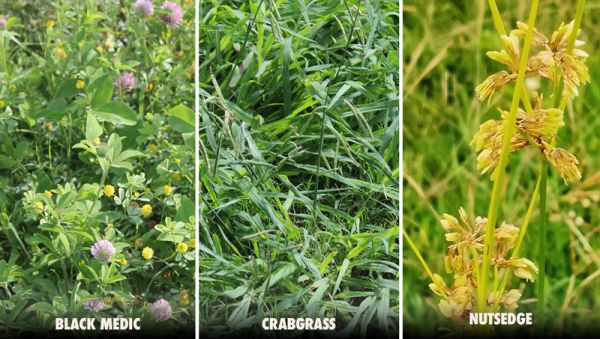While fall and spring may be your typical weed fighting seasons, summer weed control is real. VERY real. A hot, dry summer will weaken roots and encourage the growth of lurking weeds that may have escaped treatment earlier in the year. But fear not. We’ll take you through exactly what you need to do to stop summer weeds right in their tracks.
Spot (Treat) Them Suckers
The first step in weed control is knowing your enemy. Once you properly identify the type of weed infesting your turf, you can then take the proper action against it.
There are two different categories of weeds you need to be on the lookout for: grassy weeds and broadleaf weeds.
Grassy weeds such as crabgrass and nutsedge tend to blend in due to their turf-like appearance. Broadleaf weeds, on the other hand, typically possess more identifiable and unique characteristics. Some common broadleaf weeds to keep an eye out for this summer are black medic, carpetweed and spotted spurge.
If either type of weed is already present in your turf, the best course of action is to spot treat your problem areas with herbicide. A post-emergent herbicide is preferred when fighting off current infestations.
Don’t Mow Too Low
Believe it or not, how you cut has a major impact on your turf’s ability to withstand and repel weeds. When infected, your first instinct may be to start chopping your turf as low as possible to snuff out the weeds. However, we recommend resisting this urge. Cutting too short will weaken your grass and create a more favorable environment for weed development. As always, when it comes to mowing with weeds, we suggest sticking to the rule of thirds to ensure your turf is at its healthiest height.
Back To The Drawing Board
Spot treating weeds with herbicide is perfect for a quick summer fix, but, if you’re wanting a more permanent approach to weed control, you might need to switch up your entire turf-care process. A proper watering and fertilization schedule is the key to keeping weeds away. While these are deeper topics for another day, we have a few quick tips to help you in the meantime.
When watering, make sure to avoid giving your turf too much. Overwatering encourages shallow root growth and will cause your lawn to be more susceptible to drought, heat and weed growth. For fertilization, ensure you are feeding your turf during its peak growing season for balanced pH levels and thick, lush growth.
If you find yourself in a pinch this summer, use these three weed control tips to get your turf back in tip-top shape.





